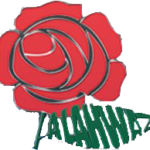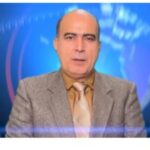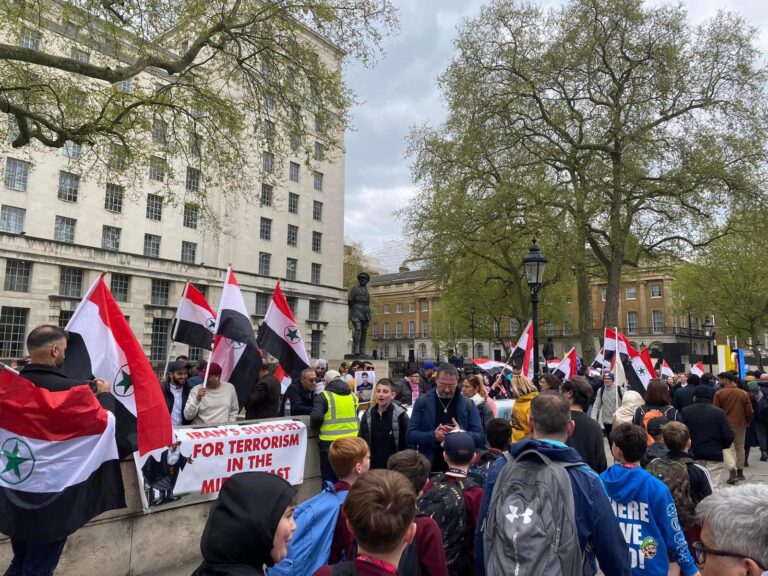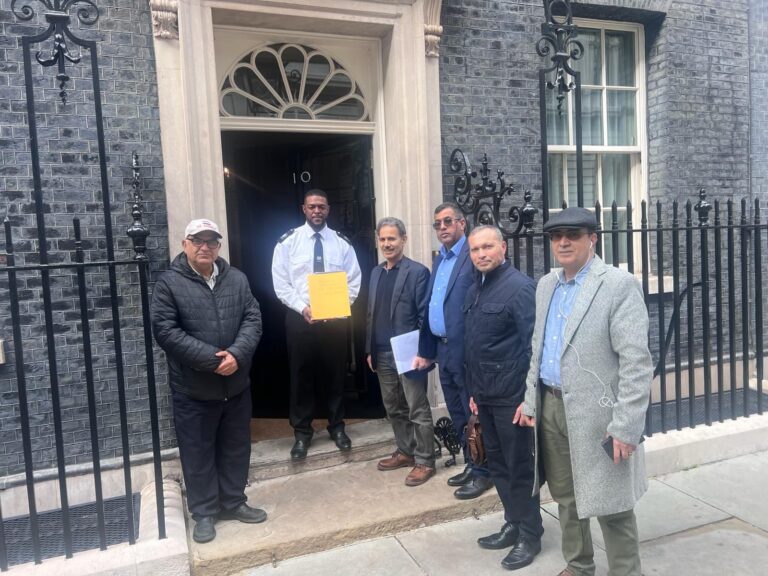In preceding articles, we delved into the examination of the physical genocide carried out by the Iranian regime against its Arab citizens. In this current article, the focus shifts to the linguistic dimension of genocide. Specifically, this study will concentrate on a specific dimension of linguistic violence, namely language erasure or linguistic oppression , experienced by Arab citizens in Iran an offense attributed to the Iranian regime.
It is apparent that authoritarian regimes employ diverse mechanisms, such as language discrimination, linguicism, glottophobia, racial and linguistic oppression (raciolinguistics), to eradicate or permanently undermine minorities’ inherent rights and cultural identity. Nevertheless, the Iranian regime employs the most formidable tactic language oppression to irrevocably eradicate Arab citizens in Iran. Scholars contend that language oppression is
arguably the most aggressive manifestation of linguicism, as it not only subjects speakers of specific languages to systems of ascription and discrimination but also seeks to forcibly transform them through coerced language loss (Roche, 2019).
Initially, it is imperative to establish a precise definition of language oppression, as a fundamental step in fostering a collective understanding of the subject matter. Taff et al. (2018) posit that language oppression is a mode of dominance congruent with other manifestations of oppression based on factors such as race, nation, color, and ethnicity. Additionally, they characterize it as the imposition of language loss through physical, mental, social, and spiritual coercion (Taff et al., This article will illustrate the language erasure tactics employed by the Iranian regime through various means, and multiple events substantiate these assertions.
The first strategy of Persian imperialism involves marginalizing Arab citizens from diverse mainstream discourses, with the aim of eliminating their presence. This strategy suppresses minority groups, particularly those of Arab descent, by legally revoking their sovereignty and purposefully making their contemporary existence imperceptible. As a consequence, they face discursive non existence, paving the way for institutional exclusion,
material deprivation, and eventual social elimination.
To reinforce this strategy, the national language of Iran, Persian, is universally prioritized over all other languages spoken in the country. This deliberate emphasis on Persian has resulted in a significant global lack of awareness regarding the presence of Arab citizens in Iran and their proficiency in the Arabic language. The widespread misconception is that Persian is the exclusive language spoken in Iran, leading to a general belief that communication in Persian is the only viable option for individuals in the country. This outcome is a meticulously
planned result of systematically excluding Arab citizens from various mainstream discourses with the primary intention of obscuring their existence.
The second methodology encompasses a comprehensive strategy aimed at the eradication of the Arabic language, deeming it incongruent with the prevailing Persian political order. This method is meticulously executed through the intentional exclusion of Arabic language from political discourse and institutional spheres, leading to the gradual disappearance of its prominence. Noteworthy observations extend across historical periods, encompassing both the previous Shah regime and the current Iranian government. During these eras, a
conspicuous absence is evident in the representation of individuals of Arab descent in key governmental positions. The deliberate exclusion of Arab voices from positions of influence further solidifies the marginalization of their linguistic and cultural identities.
Furthermore, it is essential to emphasize that, up to the present day, the highest position of the Iranian government has not been taken by an individual of Arab descent. The absence of an Arab president in Iran underscores the persistent marginalization and underrepresentation of the Arab community in the political landscape, reinforcing the deliberate efforts to suppress their cultural and linguistic heritage.
The third methodology involves meticulous language planning for the replacement of the Arabic language. The Iranian regime, through meticulous language planning, is orchestrating the replacement of the Arabic language by simultaneously subordinating, trans forming, and ultimately superseding it with Persian. In Iran, the teaching of the Arabic language is prohibited in elementary schools, with limited exposure as a foreign language taught
only once a week during secondary school. Arab citizen children are compelled to study and undergo all examinations in Persian, contravening the universal human right asserting that all children are entitled to study in their native language.
Moreover, there are no contexts in which it is mandatory to use Arabic languages, such as Persian. The use of Arabic as the main language of instruction is prohibited in schools, even when the majority of students are Arabic speakers. There is no publishing industry dedicated to the language, as the state lacks the inclination to promote the spread of t he Arabic language. The Arabic language lacks opportunities for utilization in any employment or commercial endeavors. Therefore, since Arabic can currently only be used in the home, many of its speakers describe it as impractical. But it would be more accurate to say that the systematic institutional erasure of the language amounts to a refusal to allow the language utility. Given the lack of state support for the utilization, preservation, or advancement of the Arabic language, its foreseeable destiny is one of gradual extinction.
Comparing the status of the Arabic language with Persian, it is evident that Persian holds a distinct dominance. It is actively promoted, its acquisition and use are mandated, and its role in social, cultural, and economic spheres is unequivocally privileged. Persian is mandatory for both education and employment, regulations enforce the utilization of Persian as the language of instruction from kindergarten through PhD levels in Iran. In Iran, a discernible linguistic hierarchy unfolds, placing Persian at the apex while relegating Arabic and other minority
languages to the bottom. Persian benefits from privileges, whereas minority languages experience subordination and marginalization, exposing them to the imminent threat of elimination through a deliberate strategy of neglect deeply rooted in discursive erasure.
The fourth methodology involves the absence of recognition of the Arabic language as an official language, thereby depriving its citizens of their rights. Unlike Persian, which is explicitly named in the country’s legal mechanisms for language, Arabic lack s such acknowledgment. Legally, Persian is mandated for use in all contexts within Iran, and citizens are ranked based on their proficiency in Persian. This linguistic hierarchy established by
educational systems becomes a crucial gatekeeper to both educational and employment opportunities, as proficiency in Persian grants access to vital resources.
Furthermore, the strict regulation of Persian extends into the public sphere. Media professionals, for instance, face intense scrutiny for their pronunciation, and the state organizes regular campaigns to eliminate foreign loan words from the language. These efforts underscore a comprehensive corpus planning initiative that reinforces the privilege of Persian as the dominant, native tongue in the country. The active policing of Persian in various domains reveals the magnitude of the language related power dynamics shaping the sociolinguistic landscape in Iran.
The ultimate methodology encompasses the initiation of a Persian nationalist campaign for the language purification of Persian, placing a specific emphasis on the elimination of Arabic words. This campaign involves systematically replacing Arabic words wit h Persian terms that have historical usage. The process entails meticulous identification of Arabic words, with a concerted effort to substitute them with counterparts of Persian origin. The overarching goal is to reshape the linguistic landscape by eradicating Arabic influences and reinstating Persian linguistic heritage. This intentional endeavor signifies a holistic strategy designed to
strengthen cultural identity and linguistic purity within the Persian language. Simultaneously, it seeks to marginalize and ultimately eradicate the influence of the Arabic language.
In conclusion, the multifaceted methodologies employed by the Iranian regime to oppress the Arabic language and erase its cultural and linguistic significance underscore a systematic campaign aimed at suppressing the Arab community within Iran. From deliberate exclusion in mainstream discourses to the meticulous eradication of Arabic words, the regime’s actions perpetuate a cycle of marginalization, institutional neglect, and cultural annihilation. The linguistic oppression orchestrated by Persian imperialism, coupled with the intentional neglect of Arabic in education, media, and public spheres, paints a stark picture of the pervasive discrimination faced by Arab citizens. As Iran actively promotes Persian dominance, enforcing its usage in all aspects of life, the global awareness of the rich linguistic diversity within the nation remains limited. This linguistic genocide not only undermines the inherent rights of Arab citizens but also poses a significant threat to the preservation of their cultural heritage.
Mayasa
20.11.2023










